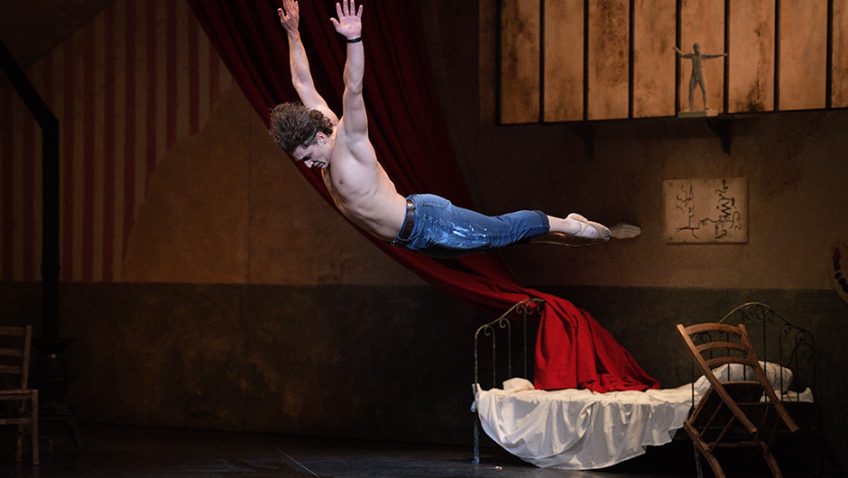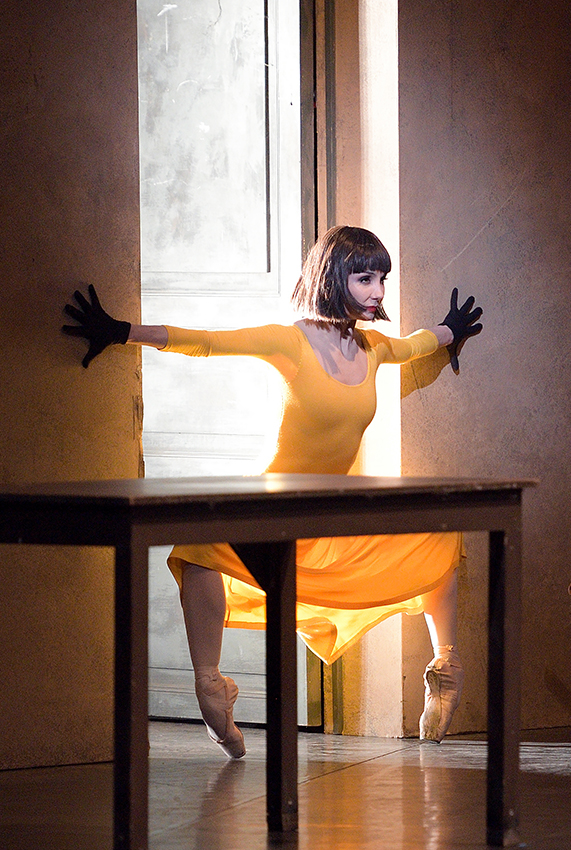Robert Tanitch reviews English National Ballet’s double bill at London Coliseum
English National Ballet is presenting three iconic ballets in two double-bills. Last week I saw August Bournonville’s La Sylphide with Kenneth MacMillan’s Song of the Earth.
This week I see La Sylphide with Roland Petit’s Le Jeune Homme et la Mort. The contrast could not be greater. The former is a highland fling, steeped in 19th century romanticism; the latter is an erotic little drama, steeped in the cynicism of the immediate post-World War 2 years.
Le Jeune Homme et la Mort
Petit’s one-act short dramatic ballet, which caused a sensation at its Paris premiere in 1946, is based on a libretto by Jean Cocteau and danced to Bach’s Passacaglia. It tells the story of an artist who is driven to suicide by his faithless and cruel lover.
Set in a grubby Parisian attic, it is a typical French drama of the period, with its caricature of a femme fatale, its erotic frustration, its preoccupation with death, its post-war existentialism, and its Gauloise cigarettes.
The jeune homme, brilliantly created by Jean Babilée and famously performed by Rudolf Nureyev and Mikhail Barryshnikov, is a great role for a great dancer and Ivan Vasiliev has the emotional and physical power and charisma to play him. He soars.
The young man, stocky and muscular, is discovered lying on his bed, bare-chested and in jeans. Wide-eyed, full of rage and torment, farouche et fou, he is visibly heading for a massive breakdown. The body spins out of control.
The choreography is notable for the way it uses the attic’s sparse furniture, having the young man climbing on to a table and overturning it and having him leaping on and off chairs, and swinging and hurling them all over the room.
His lover (Tamara Rojo), sexually lethal, wears a yellow dress and black gloves and is liable to fellate him one minute, kick him the next and provide the noose.
When he hangs himself, the walls of the attic rise to reveal the rooftops of Paris. The girl reappears, now as Death, and leads him over the roofs as the curtain falls.
La Sylphide
 It was good to see La Sylphide again. It seemed even more charming second time round with Altor Arrita as the Scottish laird and Alison McWhinney as the flirtatious Sylph he becomes besotted with on his wedding day.
It was good to see La Sylphide again. It seemed even more charming second time round with Altor Arrita as the Scottish laird and Alison McWhinney as the flirtatious Sylph he becomes besotted with on his wedding day.
To learn more about Robert Tanitch and his reviews, click here to go to his website





